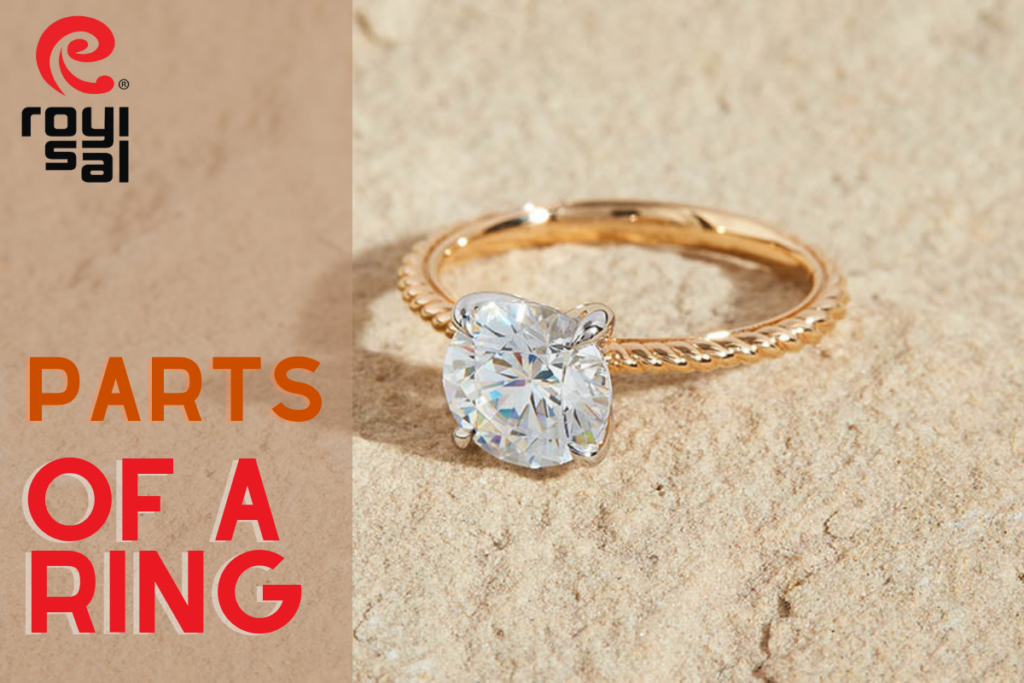
Buying a piece of jewelry can be an extensive or simple process, depending on the research you do ahead of time. Understanding the terminology associated with jewelry and the anatomy of things like rings can help narrow down your search immensely. To help you get it right, our anatomy of a ring guide breaks down all things rings, from their structural components to different design considerations.
Anatomy of a Ring
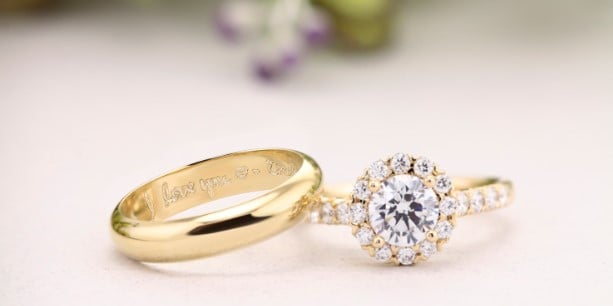
Head/Basket
The head of the ring is made up of the center stone and the metal surrounding the stone. The head can be elaborate with detailed metalwork and gemstones or simple with prongs to let the center stone stand out. This is also sometimes referred to as the “setting.”
Types of Ring Mountings
- Basket Head secures the center stone in a basket shape, used for larger center stones and stones that need a lower profile.
- Peg Head A peg head is soldered onto the shank separately and holds the center stone in a higher profile position.
- Trellis center stone is secured by interwoven prongs.
- Tulip Head is Shaped like the petals of a tulip and can add an elegant look to a ring.
- Low Profile sits low in a mounting so the center stone can maintain a low profile.
- High Profile sits higher to show off the center stone. This is the standard
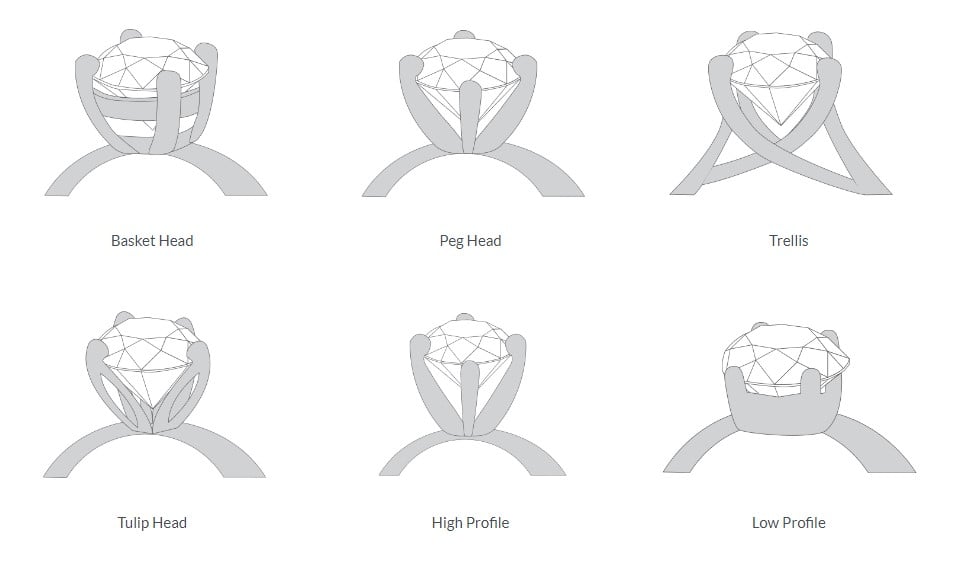
Center Stone
The central stone is in a ring. The largest if other stones are present.
Types of Center Stone Settings
- Solitaire A timeless classic, the solitaire setting features one single center gemstone. Traditionally, the stone is set high in the mounting to allow the diamond maximum exposure to light, enhancing its brilliance.
- Halo A thin band, usually made of diamonds or gemstones, that surrounds the center stone. This accent can make the center stone appear larger and can be in many shapes.
- Double Halo Two thin bands of diamonds or gemstones surround the center stone, drawing more light to the center.
- Bezel A single ring of metal secures the center stone, wrapping around its circumference. No prongs are used so this setting is slightly more secure and ideal for wearers with an active lifestyle.
- Half Bezel Still encompasses the center stone, but only half of its edge.
- East West This setting places the center stone, normally a fancy shape like oval or emerald, horizontally on the band.
- Three Stone A ring with three diamonds or gemstones in a row. The center stone is normally larger and this setting is meant to represent the past, present, and future of the couple.
- Compass Point The center stone in this setting is held in place by four prongs on the East, West, North, and South points of the stone.


Prongs
The metal pieces of the ring hold the stones in place. Prongs expose the girdle of the center stone, allowing the maximum amount of light to enter from all angles. The more prongs a ring has, the more secure the stone is.
Types of Prongs
-
- Four Prong One of the most common prong styles four prong rings leave more or the center stone exposed and are easy to repair.
- Six Prong This prong style is recommended for stones larger than one carat that need additional support.
- Double Prong takes the classic four prongs and splits each prong creating a more secure hold for unique diamond shapes like cushion and emerald.
- Claw Prong These prongs taper off as they reach the center stone to a fine point.
- V-Prong These prongs are fittingly shaped like the letter V in order to provide additional protection for stones with vulnerable corners that could chip like princess cut or pear-shaped stones.
- Diamond Tipped Each prong is set with a tiny stone accent.
Accent Stones
Diamonds or gemstones that accent the center stone. Not the same as side stones, these are along the shank or the ring’s band.
Types of Accent Stone Settings
- Channel Accent stones are set into a grooved channel, edge to edge. A great option for someone with an active lifestyle as the side stones are surrounded by metal and protected.
- Bead & Bright Cut Pinpoint This setting secures the accent stones with prongs that are set in a channel to keep everything in place.
- Pavé A type of bead setting where each accent stone is set into a recessed hole in the mounting and held in place by tiny metal beads attached to the side stone’s girdle. The stones are typically in a honeycomb pattern creating the illusion of pavement.
- Surface Prong Small shared prongs are raised slightly above the surface of the metal and secure the accent stones.
- Shared Prong is Often used to hold larger accent stones in place. A shared prong basket head is a structured design with thin prongs and a metal bar. Accent stones are set side by side, “sharing” a prong with the stone next to it.
- Bezel accent stones are held in place by a thin metal rim.
- Half Bezel Metal rim encompasses accent stones but only partially.
- Bar accent stones are held in place by small walls of enclosed metal.
- Gypsy/Flush The accent stones are set directly into the metal shank and no prongs are present.

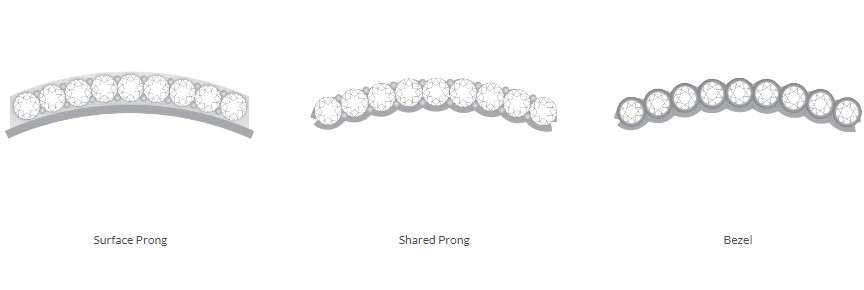
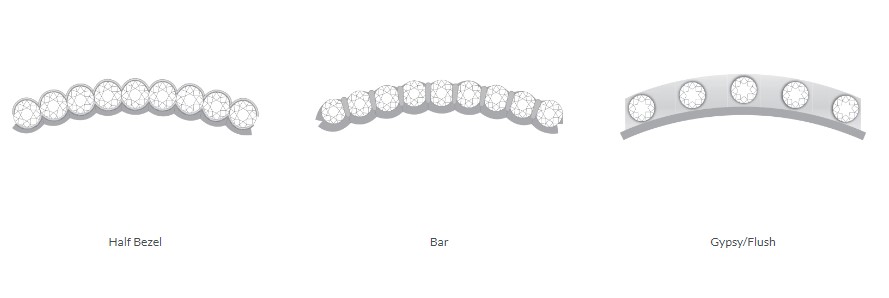 Gallery
Gallery
The gallery can be seen from the side of the ring and is the area of a ring that fits over the top of the finger (the underside of the mounted center stone). A large or domed ring often has a hollow gallery to allow more room for gemstones and fingers.
Shank
The metal base/band of the ring that goes around the finger. It starts and stops at the head/basket.
Types of Shank Styles
- Traditional/Straight The ring band is straight. No tapers or splits.
- Euro-Style The bottom of the shank is slightly flattened/squared off on the outer edge. Meant to help the ring not spin on the wearer’s finger.
- Cathedral This shank style allows you to see the center stone from the side, with arches on either side to protect the stone. The negative space in the shoulders you can see from the side is sometimes referred to as the “airline”. It gets its name from the aesthetic similarities to old cathedrals.
- Tapered and Reversed Tapered The ring band tapers off into a thinner section either away from the center stone or towards it.
- Knife Edge This band contains two slanted sides that create the appearance of a sharp razor outer edge.
- Split The ring band splits in two and then joins back together where the center stone is set.
- Bypass Each end of the band bypasses the other, wrapping around the center stone.
- Criss Cross This band is a split shank version, with each shank crossing over the other until they meet where the center stone is set.
- Swirl This is a split shank version with both shanks swirling around the center stone, most often creating a halo effect.
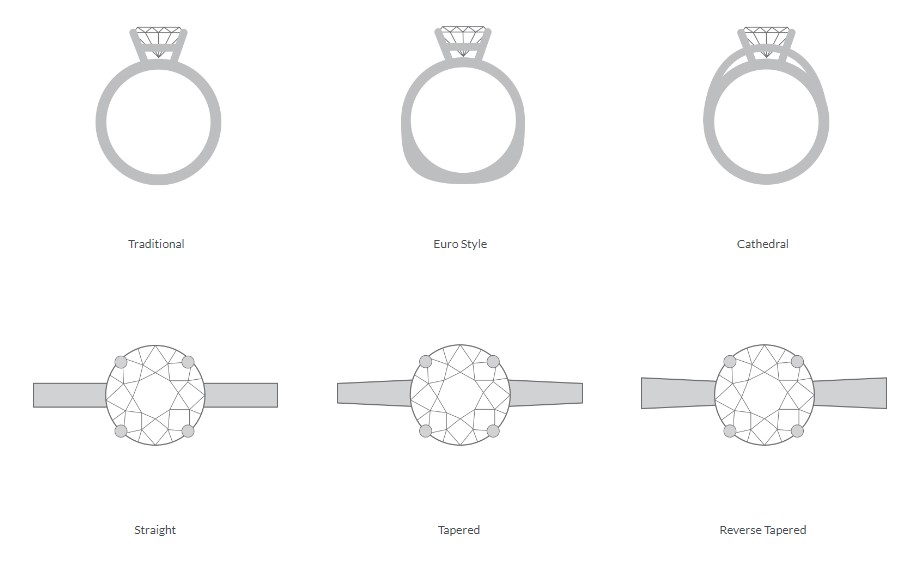
 Shoulder Uppermost part of the shank connects to the head/basket and where diamonds or gems would be set.
Shoulder Uppermost part of the shank connects to the head/basket and where diamonds or gems would be set.
Hallmark Markings on the inner part of the shank indicate the precious metal and purity (i.e., 14K, Plat, etc.).
Sizing Area/Sizing Bar Area at the base of the shank where a jeweler could resize the ring.
The Design Features of a Ring
Milgrain Small metal beading is used to accent the edge of a setting or to add a pattern to a halo or bezel set ring, common in antique or vintage-inspired rings.
Filigree embellishment, or the shank or gallery of the ring consisting of spirals and swirls, is common with antique or vintage-inspired rings.
Engraving This process carves a specified design or message into the metal of the shank. It can be on the outside or the inside of the ring.
Pierced Design feature is where portions of the ring’s metal are cut out to create negative/open space.
Surprise/Peek-a-Boo Hidden diamond(s) or gemstone(s) are only visible from certain angles, commonly found in the gallery.
Rope Design feature makes the shank appear twisted like a piece of rope.

Side Stones
Not to be confused with accent stones, side stones are set on either side of the center stone.
Types of Side Stone Shapes
- Round
- Princess
- Emerald
- Oval
- Baguette
- Tapered Baguette
- Bullet
- Trapezoid
- Trillion
- Half Moon
- Crescent
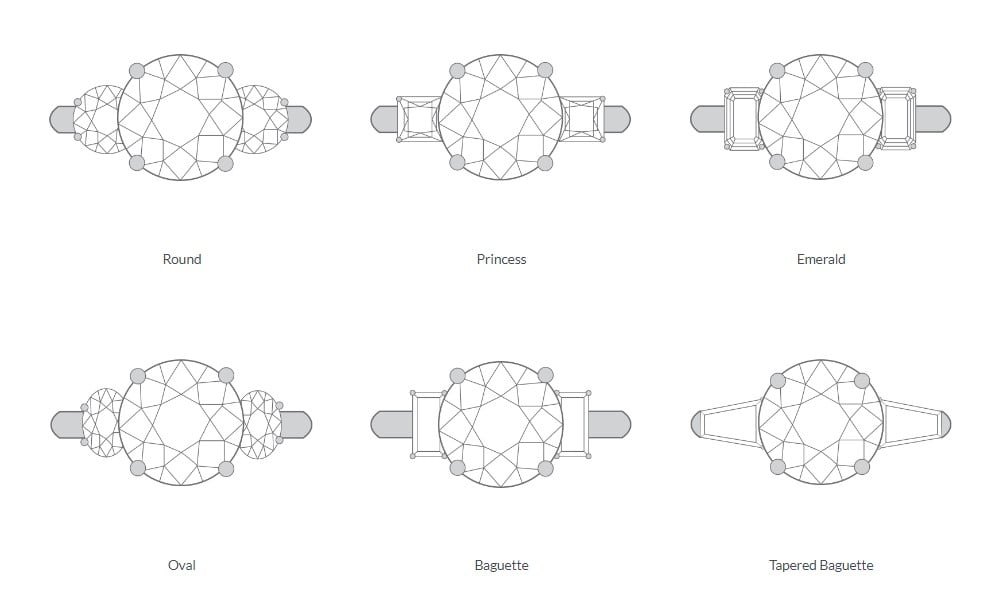
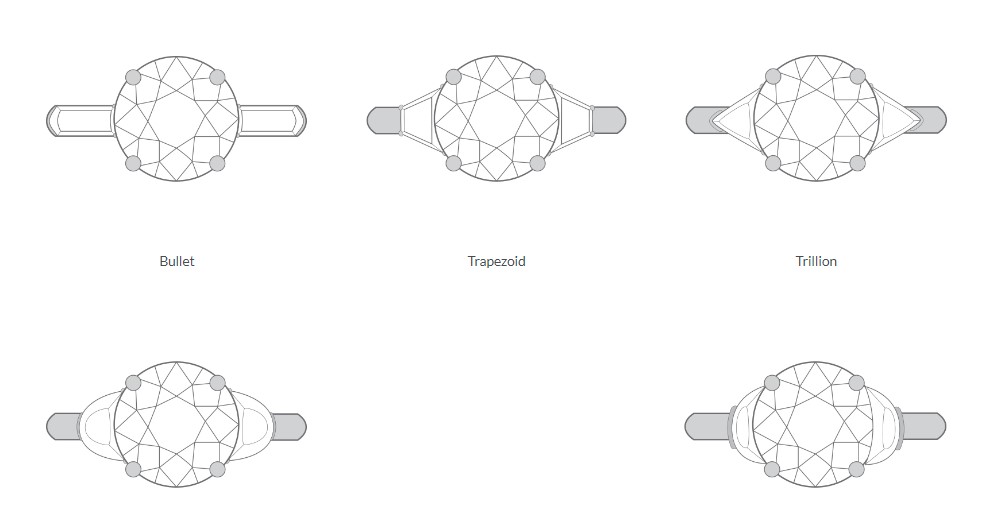
P.S. Royi Sal Jewelry, as a decades-long leader in silver jewelry design and manufacturing, invites you to download our latest magazine here and profit from the exceptional or best-seller jewelry designs at affordable prices in 2022 you will find in the magazine. Click here to download it now.
Share this post

